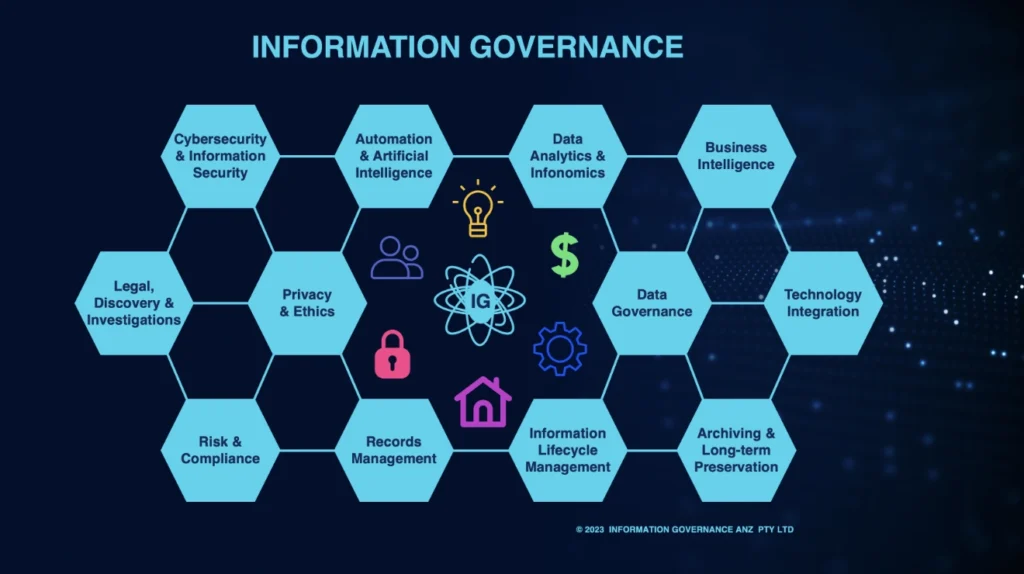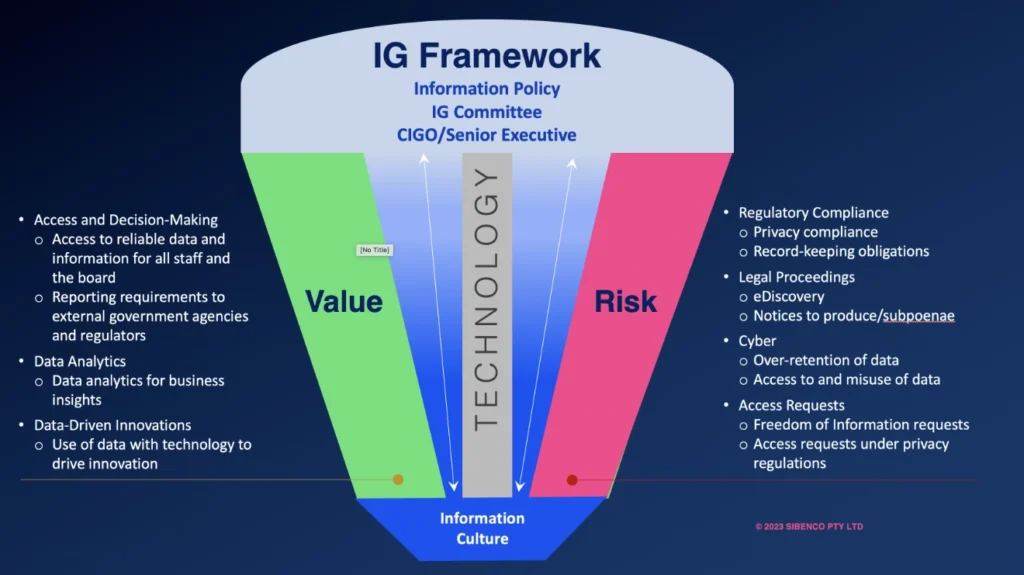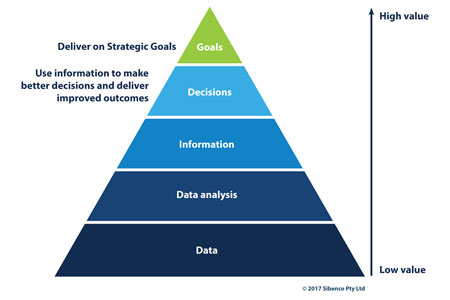Overview
Information Governance is the policies, procedures, technologies, and culture organisations build to maximise the value of information while minimising associated risks and costs. Robust information governance is critical for protecting and securing data and information within the organisation and enabling data to be safely leveraged using technology and AI for organisational strategic objectives.
At Sibenco Legal and Advisory, we develop, align, and integrate best-practice Information and Technology Governance into the overarching Risk Management Framework to improve regulatory compliance and risk management, reduce risks, and maximise the strategic benefits of data-driven technologies.
Information and data are at the core of any organisation, but with that data comes responsibilities to protect the information and prevent data privacy breaches, as well as opportunities to maximise the value of data and improve organisational performance.
With a robust Information Governance program, your organisation knows:
- The data that exists and where it exists;
- How the information is managed and made accessible;
- How data is secured and the data risks;
- The information that needs to be retained;
- Which information provides business value.
In order to govern information and both the risks and opportunities that arise, it requires all areas currently responsible for managing information to work together toward achieving the overarching strategic information governance objectives and priorities. This is illustrated in the diagram below:

Services and solutions
Sibenco Legal & Advisory offers bespoke advice and holistic solutions for robust proper governance of your information including:
- Developing or reviewing and improving the current Information Governance Framework and overarching Information Policy to align all policies and processes relevant to the collection, management, security and use of data and information across the organisation.
- Conducting a data and information maturity assessment and providing a gap analysis
- Developing or improving an information and data governance framework that covers policies, procedures, processes and guidelines for use, and aligns information and technology management with business objectives.
- Reviewing and updating record retention policies and schedules and defensible disposition of data.
- Integrating AI plan with privacy and cybersecurity policies and processes.
- Data breach incident response plans including measures to assess the cost of data breaches


















